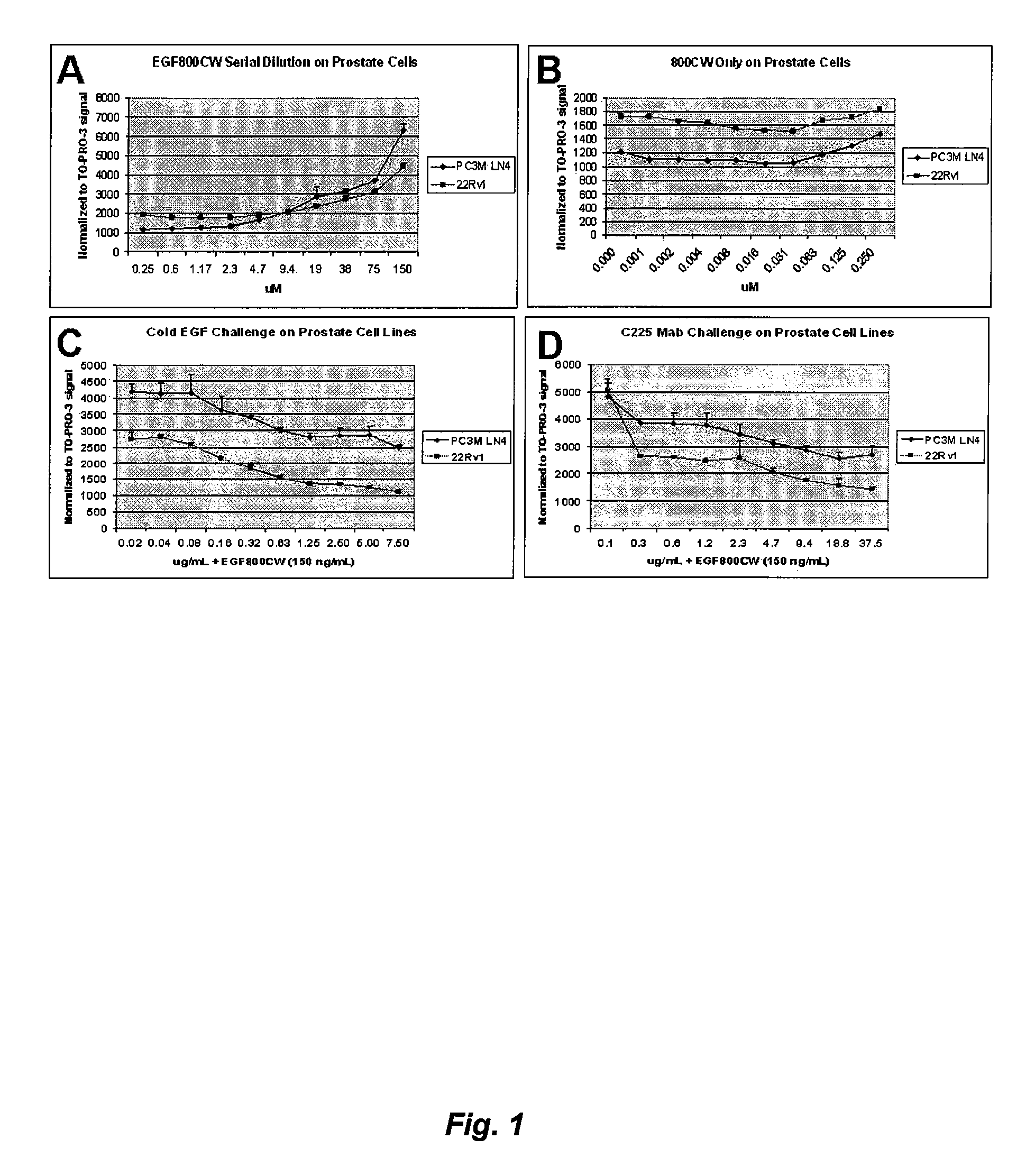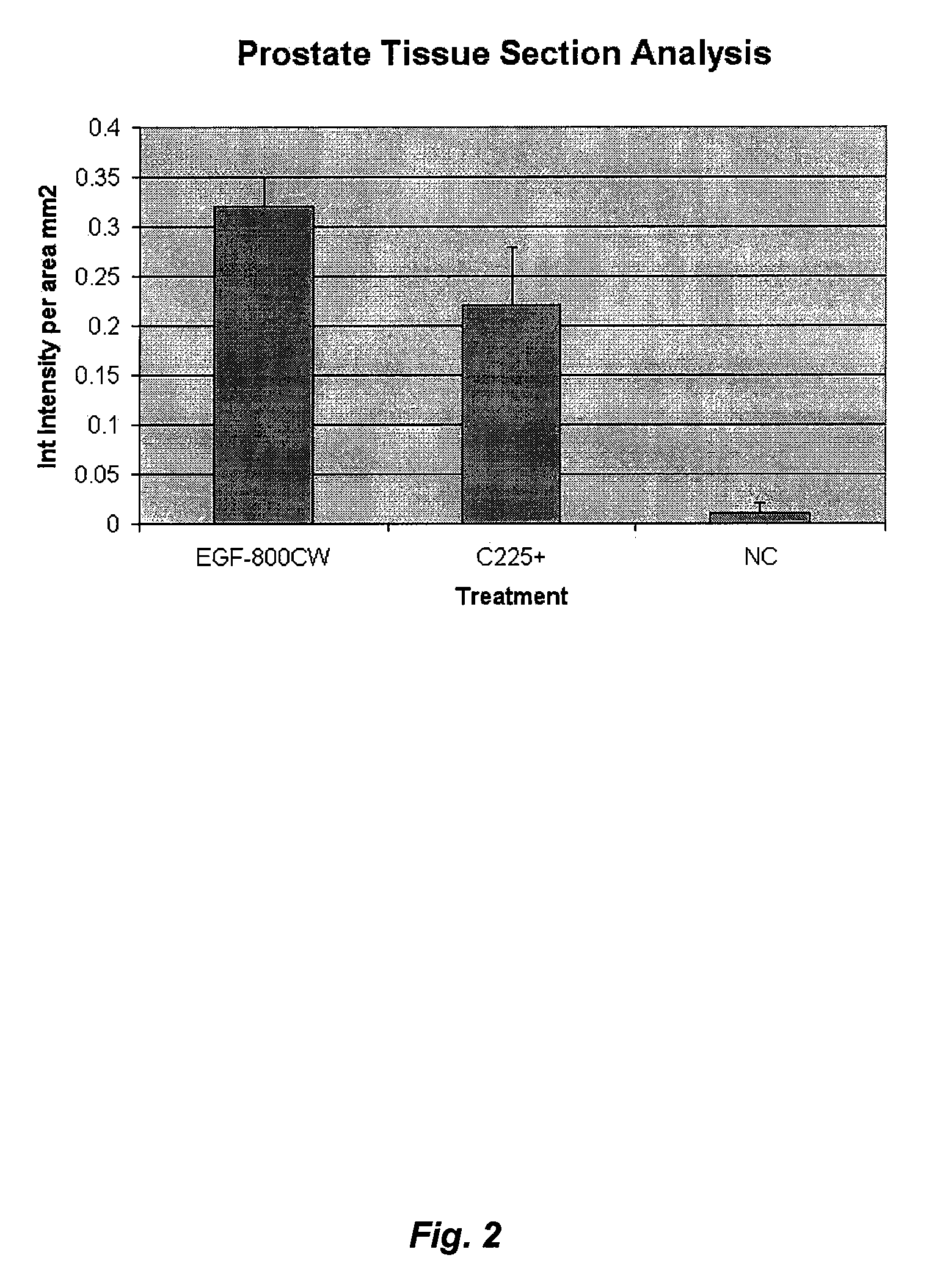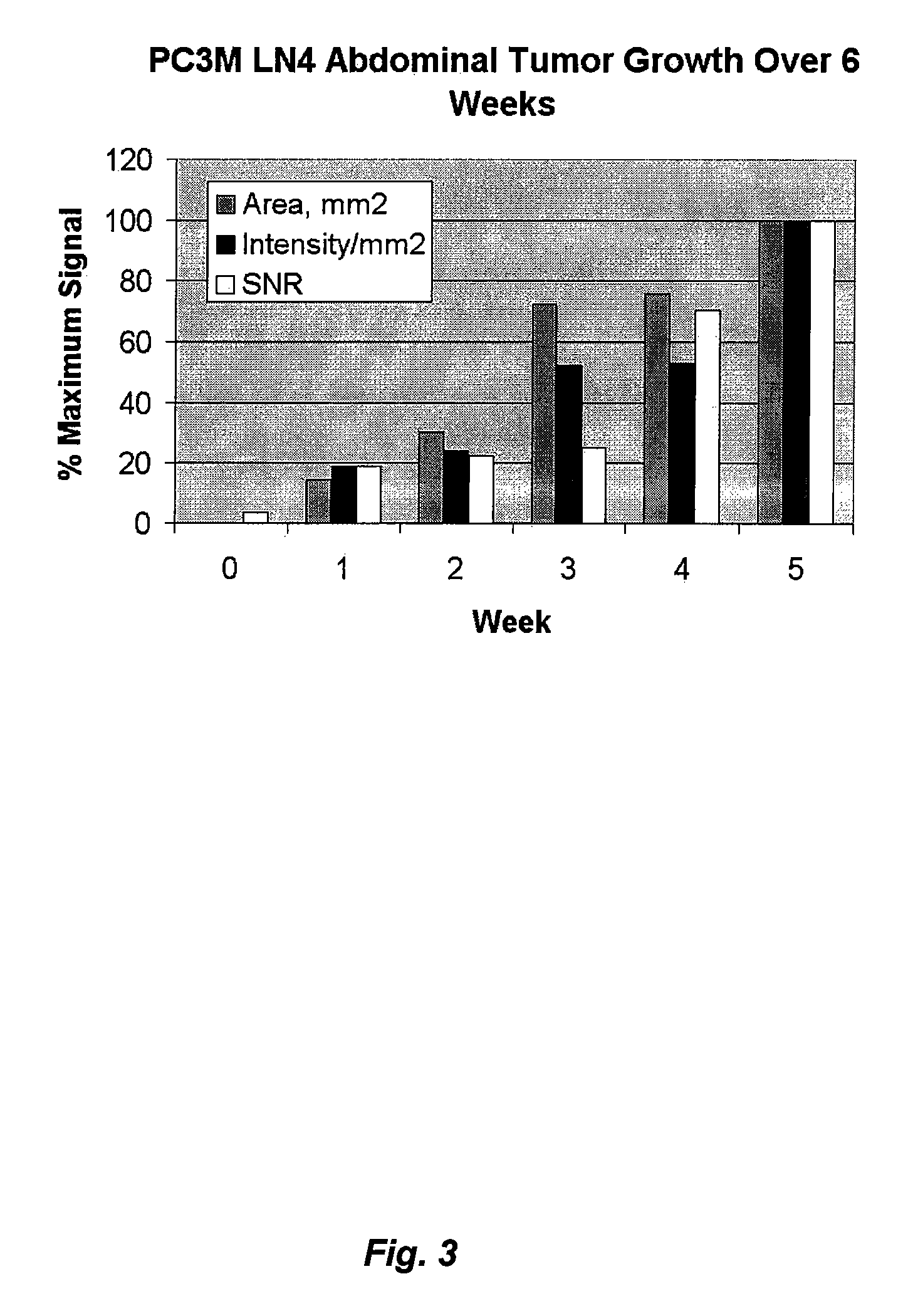Optical fluorescent imaging
a fluorescent imaging and optical technology, applied in the field of optical fluorescent imaging, can solve the problems of prostate cancer mortality, known cyanine dyes are not stable, and known cyanine dyes lack the thermal and photostability that is necessary,
- Summary
- Abstract
- Description
- Claims
- Application Information
AI Technical Summary
Benefits of technology
Problems solved by technology
Method used
Image
Examples
example 1
Synthesizing an Intermediate Cyanine Dye
[0187]
[0188]Step A: synthesis of indolesulfonate quaternary salt: A mixture of 160 g (1000 mmol) of 1,1,2-trimethyl-1H-indole (ALDRICH) and 340.4 g (256 ml; 2500 mmol; ALDRICH) of butanesultone was heated at 125° C. in 1 L RB flask with 400 ml of dichlorobenzene under the nitrogen atmosphere. After 16 h, the reaction was stopped and cooled to room temperature. The solid crystallizing out of the reaction mixture was filtered, then washed with ether (150 ml). The solid so obtained was dissolved in minimum volume of methanol (300 ml) and then precipitated by the addition of acetone (1600 ml). The solid was filtered and washed with acetone (150 ml×2). It was dried under vacuum to give 261.3 g (88.5%) of the quaternary salt. It was pure enough to use for the next step.
[0189]Step B: synthesis of benzindole alcohol quaternary salt: The quaternary salt was prepared according to the procedure of U.S. Pat. No. 6,027,709. In this case, 92.0 g of 1,1,2-Tr...
example 2
Synthesizing a Cyanine Dye
[0191]
[0192]Synthesis of sulfo-phenoxy dye: In 40 ml of dry DMF was dissolved 2.95 g (12.70 mmol) of 4-hydroxybenzenesulfonic acid. After adding 1.08 g (60%; 26.8 mmol) of sodium hydride, the mix was stirred at room temperature for 10 min. under nitrogen. The chloro dye of Example 1 (7.41 g; 10 mmol), dissolved in 25 ml of dry DMF was added to the reaction mixture and stirred further for 45 to 50 min. Absorption max of 788 nm at the end of this period indicated an hypochromic shift of 13 nm (chloro dye abs. at 801 nm), and thus the formation of the sulfo-phenoxy dye. Dry ice was added to the reaction mixture and DMF was removed under vacuum. The crude dye was purified by column chromatography (silica gel 60; solvent gradient: 10% methanol in acetonitrile to 30% methanol in acetonitrile) to obtain 4 g of the pure dye. (Yield 45%).
example 3
Synthesizing a Sulfo-Phenoxy Phosphoramidite Cyanine Dye
[0193]
[0194]Synthesis of a sulfo-phenoxy dye: In 20 ml of dry methylene chloride was dissolved 1.4 g (1.59 mmol) of the above sulfo-phenoxy dye and the solution was cooled in an ice-acetone bath with stirring under nitrogen. After adding 0.6 g (1.01 ml; 3.18 mmol) of 2-cyanoethyl tetraisopropylphosphorodiamidite, and 0.045 g (1.3 ml; 0.64 mmol) of 1-H tetrazole solution (0.5M) at 0° C., the solution was stirred at room temperature for 2 to 2.5 h. Methylene chloride that contained 1% triethyl amine was added to the reaction mixture the reaction mixture was then subjected to washings with 5% sodium bicarbonate (50 ml×2) and water (50 ml×2). After drying over anhydrous sodium sulfate, the solution was filtered and the filtrate was concentrated to 5 ml. The concentrated solution was added at 0° C. to hexane (50 ml) under stirring and under nitrogen. The viscous residue obtained after the decantation of hexane was triturated with et...
PUM
| Property | Measurement | Unit |
|---|---|---|
| molecular weight | aaaaa | aaaaa |
| wavelength | aaaaa | aaaaa |
| bathochromic shift | aaaaa | aaaaa |
Abstract
Description
Claims
Application Information
 Login to View More
Login to View More - R&D
- Intellectual Property
- Life Sciences
- Materials
- Tech Scout
- Unparalleled Data Quality
- Higher Quality Content
- 60% Fewer Hallucinations
Browse by: Latest US Patents, China's latest patents, Technical Efficacy Thesaurus, Application Domain, Technology Topic, Popular Technical Reports.
© 2025 PatSnap. All rights reserved.Legal|Privacy policy|Modern Slavery Act Transparency Statement|Sitemap|About US| Contact US: help@patsnap.com



